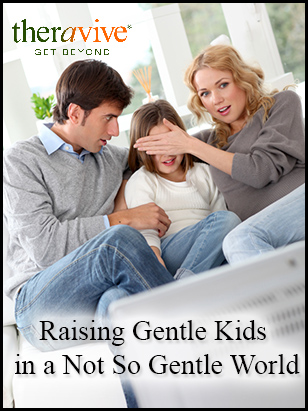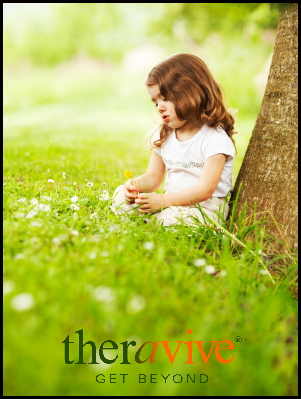 Youth Violence in Today's World
Youth Violence in Today's World
One only has to turn on the television to see yet another case of youth violence. It seems that it is happening more and more often, from school shootings to cases of bullying so severe that the victim takes his or her own life. Too often, youth are turning to emotional and physical aggression to solve problems and cope with their own feelings. The causes of youth violence are complex, and many of us struggle to understand why it happens. Each case is unique, but violent behavior is thought to be caused by the interplay of factors including individual characteristics, family factors, school/employment factors, association with peers, and biological factors. The more risk factors that are present in a young person’s life, the more risk there is that he or she will become aggressive or violent (Becroft, 2009).
According to The Centers for Disease Control and Prevention (2011), homicide remains the leading cause of death in young people, and violence is still a major cause of injuries to children and teens. In 2011, over 700,000 youth, ages 10-24 were treated in emergency rooms with injuries from assaults (CDC, 2011). This violence impacts youth from every race, ethnicity, and socioeconomic level, in big cities and in small towns. As parents, we never want our children to be victimized, but we also never want our child to hurt others. We want our children to be respectful and gentle, and also be able to speak up and advocate for themselves in an appropriate way. So, how can we raise children that are strong, kind, and compassionate, and who can solve problems and cope with their feelings without resorting to aggression?
The Media and Kids
When we talk about raising non-violent kids, we must talk about their experiences with media. There has been a great deal of discussion and debate over the past few decades about the impact of violence in the media on children. Many movies, television shows, and video games portray very overt and graphic violence, sometimes even enabling the young person to be the perpetrator of the violence. We have known for some time that exposure to violence in the media creates a significant risk to the health of children. There is extensive research that has demonstrated again and again that media violence can contribute to aggressive behavior. Additionally, it can lead to children becoming desensitized to violence, having nightmares, and developing fears about being harmed (Media Violence, 2009).
Studies going back to the 1980’s show that the more children are exposed to violence in the media they view and interact with, the more at risk they are. They are at risk of becoming less sensitive to the suffering or pain of others, more likely to be afraid of the world around them, and more likely to behave in aggressive ways toward others (Violence in the Media, 2009). In another study, Psychologist Craig A. Anderson and others concluded that, “the evidence strongly suggests that exposure to violent video games is a causal risk factor for increased aggressive behavior, aggressive cognition, and aggressive affect and for decreased empathy and pro-social behavior" (Violence, 2009).
Of course, not all children who see violence in movies or play violent video games will go on to behave aggressively toward others. Many other factors, like mental health and family dynamics, also play a role. In addition to monitoring their child’s exposure to violent media, there are a number of other things parents and others can do to help their children be compassionate toward others and develop non-violent ways to manage stress and solve problems.
Kind Kids
While we do hear a lot about kids behaving violently and hurting other kids and adults, we also know that children can be very loving, kind, and compassionate. Some may even argue that it is a child’s basic true nature to be kind and help others. But, it’s an unfortunate fact that we all live in a world where violence is too common, and parents sometimes struggle to explain violence to their kids and teach them alternatives to what they see in movies and on the news.
When kids get used to seeing violence, it becomes less shocking and more acceptable to them. They may also see that aggression can be a way to get what they want. So, how can parents counter the violence and aggression their kids may see? The American Psychological Association (2014) offers some suggestions for loved ones to help children grow into compassionate people who can solve problems in pro-social ways, without violence:
· Develop their sense of empathy: Teaching kids to be sensitive and caring when it comes to the feelings of others is essential. Parents should let children know that hurtful behavior toward others is not okay with them, and that they expect kind and considerate behavior. Help children understand how their behavior impacts others. They should understand that, “Tommy is crying because he feels sad that you took his toy truck away from him”. When correcting a child’s behavior, it’s important to separate the child from their behavior. For example, instead of saying, “you are mean”, say, “what you did was mean”. Also, we need to model empathy, and show empathy for our children (What Makes Kids Care, 2014). We need to let them see us being sensitive to the feelings of others. We need to walk our talk.
 · Encourage kids to help others: Find ways for kids to volunteer to help others, either through schools, clubs, community agencies, or churches. Often, kids feel very good when they can help others who are less fortunate than they are. It’s important to match volunteer opportunities to a child’s age, interests, and emotional maturity and health. Some volunteer work can bring kids in contact with some of the harsher realities of life. It’s important to be sure they can handle this, and that it does not cause them excessive worry or any trauma (What Makes Kids Care, 2014).
· Encourage kids to help others: Find ways for kids to volunteer to help others, either through schools, clubs, community agencies, or churches. Often, kids feel very good when they can help others who are less fortunate than they are. It’s important to match volunteer opportunities to a child’s age, interests, and emotional maturity and health. Some volunteer work can bring kids in contact with some of the harsher realities of life. It’s important to be sure they can handle this, and that it does not cause them excessive worry or any trauma (What Makes Kids Care, 2014).
· Teach kids about people who help: Too often, kids may glamorize celebrities or others who make bad decisions, including drug use and violent behavior. Educate kids about famous people who are kind, responsible, and compassionate. Find out about movie stars or athletes who are philanthropists or help people in other ways. Provide books for kids that include realistic stories about people helping others. Adults can explain why these people are role models to be admired and looked up to.
· Give kids a safe home base: When kids feel safe, themselves, they are more able to help others and focus on the needs of others. When they don’t have their own basic need for safety met, they will focus more on themselves and getting their unmet needs met.
· Get involved with children’s media experiences: Children tend to mimic what they see on television and in movies, so knowing what they watch is important. Limit viewing of violent media, and encourage kids to watch shows that promote caring, compassion, and using communication to solve problems.
· Talk to kids about violence and aggression: Have open and honest discussions with children about the violence and aggression they see. Adults can let kids know what they think and believe about hurtful or violent behavior, and they can ask kids what they think and feel. Talk about situations that happen on T.V., and in real life, and ask kids how people could have behaved differently. Talk about why mean or aggressive behavior is wrong, and how it makes people feel. Encourage children to put themselves in the shoes of other people, increasing their ability to empathize with others.
It’s also important to teach kids non-violent problem-solving. Everyone, including children and teens, needs to learn how to solve problems and manage strong emotions without becoming aggressive or violent. Emotions can be powerful, and it takes skill and maturity to think before acting, and make good decisions. But, these are skills kids can learn. Children may be tempted to hit, slap, push, or kick, and that may even be their first inclination, sometimes! They may also lash out verbally when they are angry or frustrated.
However, adults must take the time to educate kids about why aggression is wrong, and also teach healthy and safe skills for managing conflict and their emotions. This education can start early, and should be developmentally appropriate. Even very young children can learn empathy. Lastly, but maybe most importantly, we need to be sure kids are also kind to themselves. It’s hard to be gentle and compassionate with others when we’re being too hard on ourselves.
These are just a few ideas to help parents and others teach children to be loving, gentle and compassionate. Children can learn that aggression is not okay, and they have the ability to develop empathy for people who are hurting. Teaching these skills can go a long way toward decreasing the victimization of children. Kids who learn to solve problems and manage their emotions in healthy and compassionate ways will be more able to live happy, healthy and productive lives.
_________________________________________________________________________________________________________________________________
Becroft, Andrew. "What Causes Youth Crime, and What Can We Do about It?" What Causes Youth Crime, and What Can We Do about It? -. The Youth Court of New Zealand, 7 May 2009. Web. 6 July 2014. <http://www.justice.govt.nz/courts/youth/publications-and-media/speeches/what-causes-youth-crime-and-what-can-we-do-about-it>.
Media Violence. (2009). Retrieved July 5, 2014, from http://pediatrics.aappublications.org/content/124/5/1495.full
Violence in the media: Psychologists study TV and video game violence for potential harmful effects. (2013, November). Retrieved July 5, 2014, from http://www.apa.org/research/action/protect.aspx
What makes kids care? Teaching gentleness in a violent world. (2014). Retrieved July 5, 2014, from http://www.apa.org/helpcenter/kids-care.aspx